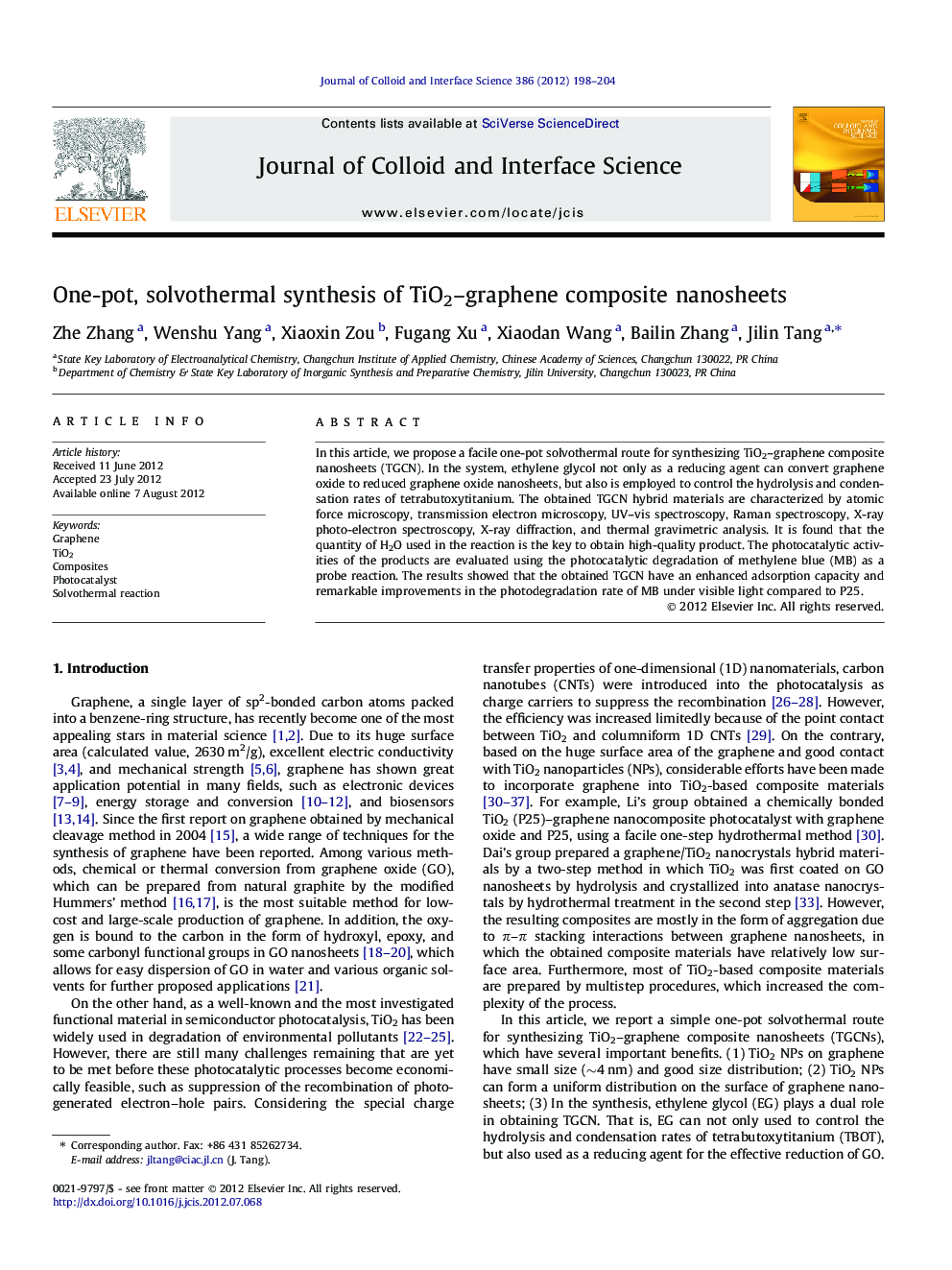| کد مقاله | کد نشریه | سال انتشار | مقاله انگلیسی | نسخه تمام متن |
|---|---|---|---|---|
| 608109 | 880568 | 2012 | 7 صفحه PDF | دانلود رایگان |

In this article, we propose a facile one-pot solvothermal route for synthesizing TiO2–graphene composite nanosheets (TGCN). In the system, ethylene glycol not only as a reducing agent can convert graphene oxide to reduced graphene oxide nanosheets, but also is employed to control the hydrolysis and condensation rates of tetrabutoxytitanium. The obtained TGCN hybrid materials are characterized by atomic force microscopy, transmission electron microscopy, UV–vis spectroscopy, Raman spectroscopy, X-ray photo-electron spectroscopy, X-ray diffraction, and thermal gravimetric analysis. It is found that the quantity of H2O used in the reaction is the key to obtain high-quality product. The photocatalytic activities of the products are evaluated using the photocatalytic degradation of methylene blue (MB) as a probe reaction. The results showed that the obtained TGCN have an enhanced adsorption capacity and remarkable improvements in the photodegradation rate of MB under visible light compared to P25.
Figure optionsDownload high-quality image (129 K)Download as PowerPoint slideHighlights
► One-pot, solvothermal synthesize of TiO2–graphene composite nanosheets (TGCN).
► The quantity of H2O is the key to control the quality of TGCN.
► TGCN show enhanced adsorptivity and comparable photocatalytic activities to P25.
Journal: Journal of Colloid and Interface Science - Volume 386, Issue 1, 15 November 2012, Pages 198–204